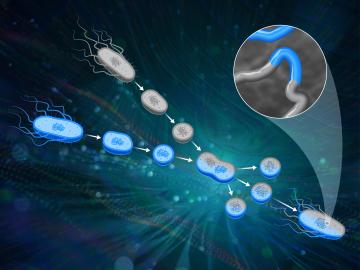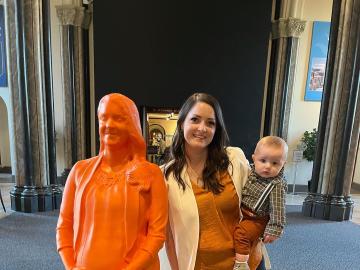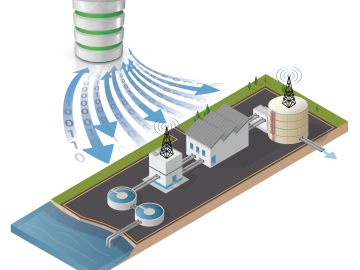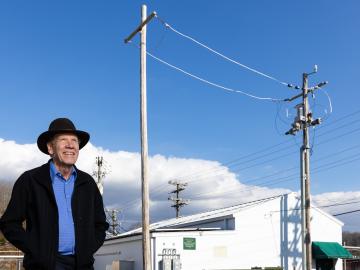
Filter News
Area of Research
- Advanced Manufacturing (9)
- Biological Systems (1)
- Biology and Environment (17)
- Building Technologies (1)
- Computational Biology (1)
- Computational Engineering (1)
- Computer Science (9)
- Electricity and Smart Grid (1)
- Energy Science (40)
- Functional Materials for Energy (1)
- Fusion and Fission (2)
- Fusion Energy (1)
- Isotopes (2)
- Materials (49)
- Materials for Computing (4)
- National Security (17)
- Neutron Science (14)
- Nuclear Science and Technology (3)
- Quantum information Science (3)
- Sensors and Controls (1)
- Supercomputing (50)
News Topics
- (-) 3-D Printing/Advanced Manufacturing (32)
- (-) Artificial Intelligence (27)
- (-) Biomedical (16)
- (-) Composites (8)
- (-) Computer Science (69)
- (-) Isotopes (11)
- (-) Machine Learning (15)
- (-) Microscopy (23)
- (-) Physics (25)
- (-) Security (13)
- Advanced Reactors (12)
- Big Data (17)
- Bioenergy (30)
- Biology (29)
- Biotechnology (4)
- Buildings (16)
- Chemical Sciences (15)
- Clean Water (11)
- Coronavirus (9)
- Critical Materials (5)
- Cybersecurity (15)
- Element Discovery (1)
- Energy Storage (35)
- Environment (58)
- Exascale Computing (10)
- Fossil Energy (1)
- Frontier (12)
- Fusion (16)
- Grid (21)
- High-Performance Computing (16)
- Hydropower (8)
- Irradiation (1)
- ITER (2)
- Materials (37)
- Materials Science (46)
- Mercury (3)
- Molten Salt (5)
- Nanotechnology (24)
- National Security (17)
- Neutron Science (43)
- Nuclear Energy (37)
- Partnerships (8)
- Polymers (12)
- Quantum Computing (7)
- Quantum Science (22)
- Simulation (6)
- Space Exploration (10)
- Summit (18)
- Transportation (29)
Media Contacts

When Andrew Sutton arrived at ORNL in late 2020, he knew the move would be significant in more ways than just a change in location.

ORNL scientists had a problem mapping the genomes of bacteria to better understand the origins of their physical traits and improve their function for bioenergy production.

A force within the supercomputing community, Jack Dongarra developed software packages that became standard in the industry, allowing high-performance computers to become increasingly more powerful in recent decades.

A study by researchers at the ORNL takes a fresh look at what could become the first step toward a new generation of solar batteries.

Oak Ridge National Laboratory scientist Amy Elliott is one of 120 women featured in a new exhibit, IfThenSheCan, at the Smithsonian to commemorate Women's History Month. A life-size 3D printed statue of Elliott, a manufacturing scientist, is on display in the Smithsonian Castle in Washington, D.C.

University of Pennsylvania researchers called on computational systems biology expertise at Oak Ridge National Laboratory to analyze large datasets of single-cell RNA sequencing from skin samples afflicted with atopic dermatitis.

Oak Ridge National Laboratory scientists worked with the Colorado School of Mines and Baylor University to develop and test control methods for autonomous water treatment plants that use less energy and generate less waste.

A study led by researchers at ORNL used the nation’s fastest supercomputer to close in on the answer to a central question of modern physics that could help conduct development of the next generation of energy technologies.

ORNL, TVA and TNECD were recognized by the Federal Laboratory Consortium for their impactful partnership that resulted in a record $2.3 billion investment by Ultium Cells, a General Motors and LG Energy Solution joint venture, to build a battery cell manufacturing plant in Spring Hill, Tennessee.

Bruce Warmack has been fascinated by science since his mother finally let him have a chemistry set at the age of nine. He’d been pestering her for one since he was six.


